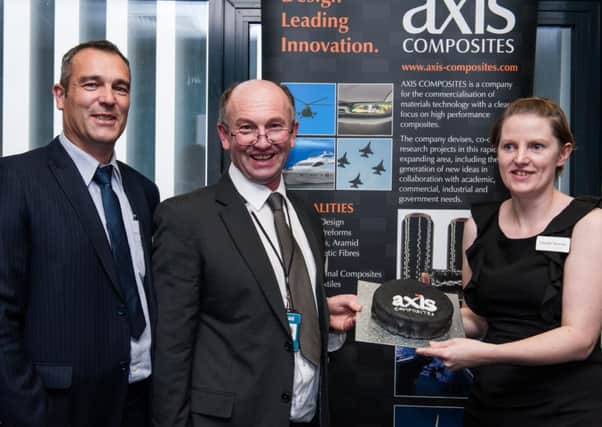Firm weaves old skills with new technologies


The University of Ulster spin-out company, Axis Composites Ltd, has announced it has the capability to weave hi-tech carbon fibre fabrics to meet the demand for strong yet lightweight new materials for use in the aircraft, satellites, surveillance drones, wind turbines, and protective garments.
Four of the people at the top of Axis are from Larne: Dr John MacRae is the university’s commercialisation manager and a director of the company; chairman is Mark Fekkes; and the managing director is Steven Kirby. All three are members of East Antrim Boat Club. The weave manager is Dr Glenda Stewart, also from Larne.
Advertisement
Hide AdAdvertisement
Hide AdCo Antrim’s weaving heritage dates back over 300 years, Originally, a cottage industry, with industrialisation, rural weavers moved to factories alongside rivers. Brown’s factory was established in Waterloo Road, driven by steam engines, and another - the beetling mill - drew power from the Inver River.
To produce light and strong modern fabrics, Axis Composites uses a traditional loom which has been rethreaded with 2,304 individual strands of carbon fibre. The weave process has been adapted to work in three dimensions instead of the traditional two.
John MacRae said: “Typical software projects within the University of Ulster – iPhone and android apps, social media and that kind of thing – didn’t exist in any form 10 or 20 years ago, but the industrial textile heritage associated with this project goes back centuries. It is nice to know that the traditions, skills and machines developed locally with the water wheel can still create jobs today.”
Mark Fekkes was initially interested in new materials to build performance parts for his racing yachts, but liked it so much, he stayed. “Initially, I thought it was about making carbon fibre hulls more cheaply, but then I realised it was a small company with big ambitions,” he added.
Advertisement
Hide AdAdvertisement
Hide AdSteven Kirby explained: “If an issue needs to be discussed, we can have a quick chat in the boat club bar rather than waiting for board meetings to come around. It gets things resolved more quickly.”
Glenda Stewart said: “I’m far too young to remember when Larne workers stood by the looms in Brown’s factory, making damask and linen products.
“However, the weaving of hi-tech carbon fibre materials for demanding applications makes this an exciting time to be working at Axis Composites. If anyone remembers the looms at Browns Factory I’d love to hear more about it.”
The company is presently based in a specialised technical facility owned jointly by QUB and University of Ulster.
The next ambition is to move Axis to dedicated premises, and a number of potential locations are being investigated.